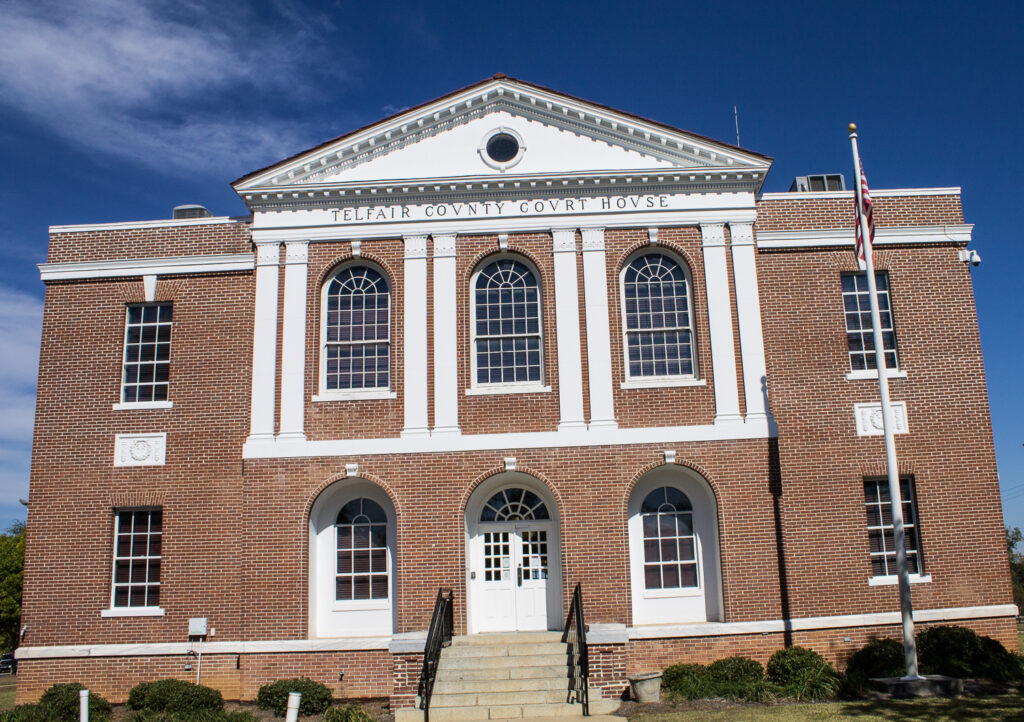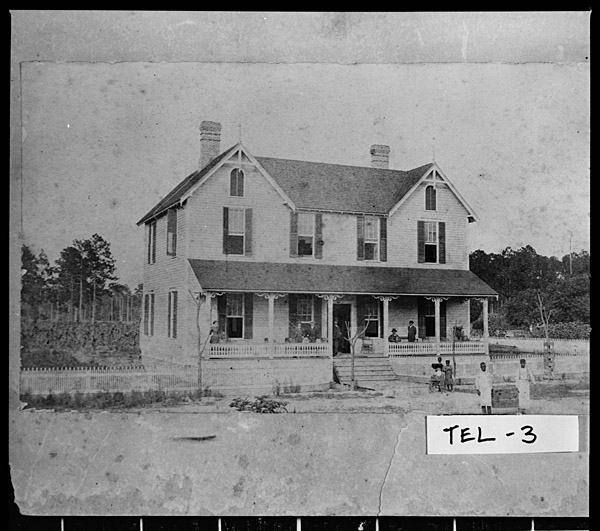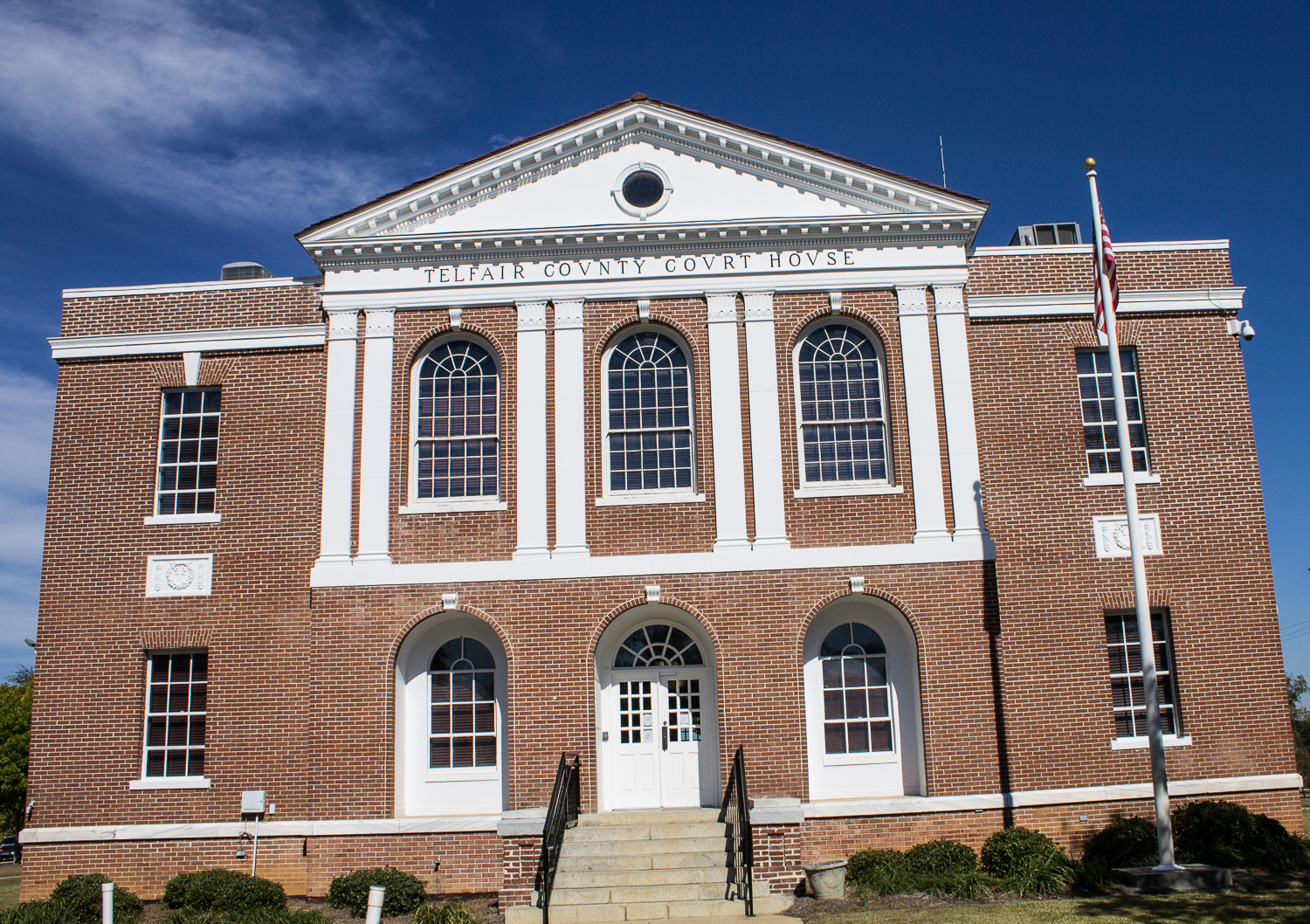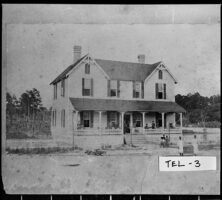Located in central Georgia, Telfair County is the state’s thirty-fifth county and comprises 441 square miles. Created in 1807 from Wilkinson County, it was named for Georgia governor Edward Telfair.
Other counties formed from portions of Telfair County are Coffee County (1854) and Dodge County (1870). In 1812 part of Telfair was transferred to Montgomery County, which was created in 1793. In 1819 and again in 1825, part of Appling County was transferred to Telfair, and between 1872 and 1877, land was shifted back into Telfair County from Dodge and Montgomery counties.
The land was originally held by Creek Indians. A large number of the earliest white settlers were Scots Highlanders from the Carolinas.
The first county seat was Jacksonville, a port on the Ocmulgee River settled in 1807 and incorporated in 1815. When the county lost some of its southern land to Coffee County in 1854, citizens began to demand a more centrally located seat of government. The process of settling upon an acceptable new location, partially interrupted by the Civil War (1861-65), took decades. The site was finally chosen in 1871, when the Macon and Brunswick Railroad took its line through eastern Telfair County, bypassing Jacksonville by eighteen miles. The railroad established a depot in what was then a central location to the county, settled by Daniel M. McRae and his family, as well as other Scots emigrants from the Carolinas. Businesses were attracted to the spot by the availability of rail transportation, and the town of McRae grew quickly enough to achieve incorporation by 1874, three years after the site was chosen as the new county seat.

Estimations from financial records show that the first courthouse was completed around 1820. No records remain about the fate of the first courthouse, or any that followed it until 1860, when records show that a two-story wooden structure was built for the purpose in Jacksonville. After the county seat was moved, a new courthouse was built in McRae in 1873. It burned in the 1930s and was replaced in 1934 by the current structure.
During the War of 1812 (1812-15), General David Blackshear built Fort Clark near Jacksonville. Elsewhere in Telfair County, he built Fort Adams and Fort McIntosh. Action during the Creek Wars was seen by Telfair County men in 1818, when thirty-four Telfair militia members fought with sixty Creek Indians in the last battle between Creeks and whites in the area. The conflict, which took place in nearby Wilcox County, is known as the Battle of Breakfast Branch.
Other incorporated towns in Telfair County are Helena, Lumber City, Milan, and Scotland. Helena was incorporated in 1890. Lumber City, home of the largest sawmill in the South when it was founded, was incorporated in 1889. It was earlier known as “Artesian City,” reflecting its original reliance on artesian wells. Milan, established around a railroad depot in the 1880s, was incorporated in 1891. The town of Scotland, incorporated in 1911, was settled by so many Highlanders that it was first called McVille. After it became apparent that many people confused McVille with McRae, the name was changed to otherwise reflect the presence of the town’s many settlers of Scottish extraction. Two unincorporated communities in Telfair County are Temperance, a rural community built on the grounds of an antebellum Methodist camp–meeting ground, and Towns, named for Johnson C. Towns, an early settler.

Agriculture played a large part in Telfair County’s early economy, with rich soil and hardwood forests yielding well-diversified crops. Truck farming, dairy and poultry products, turpentine, and berries have been among the county’s largest farm products.
Among the many notable residents of Telfair County was Georgia governor John Clark, who owned a plantation near Jacksonville. Fort Clark, built in 1813 along the Ocmulgee River, was next to his plantation and is believed to have been named after him. Other prominent residents include writer Brainard Cheney; War of 1812 veteran John Coffee; U.S. Secretary of Health, Education, and Welfare Marion B. Folsom, who was appointed by U.S. president Franklin D. Roosevelt in 1934 to serve on the Advisory Council on Economic Security, which laid the foundation for the Social Security program; Georgia governor Eugene Talmadge; and U.S. senator Herman Talmadge.
Among the places of interest are the Horse Creek Wildlife Management Area, which includes 21,909 acres of bottomland hardwood forest, and Little Ocmulgee State Park and Lodge, a 1,360-acre park with a lake. Liberty Square, at the intersection of five of the county’s highways, holds a thirty-five-foot-high replica of the Statue of Liberty and the old McRae fire bell, refurbished to resemble the Liberty Bell.
According to the 2020 U.S. census, the population of Telfair County was 12,477, a decrease from the 2010 population of 16,500.







